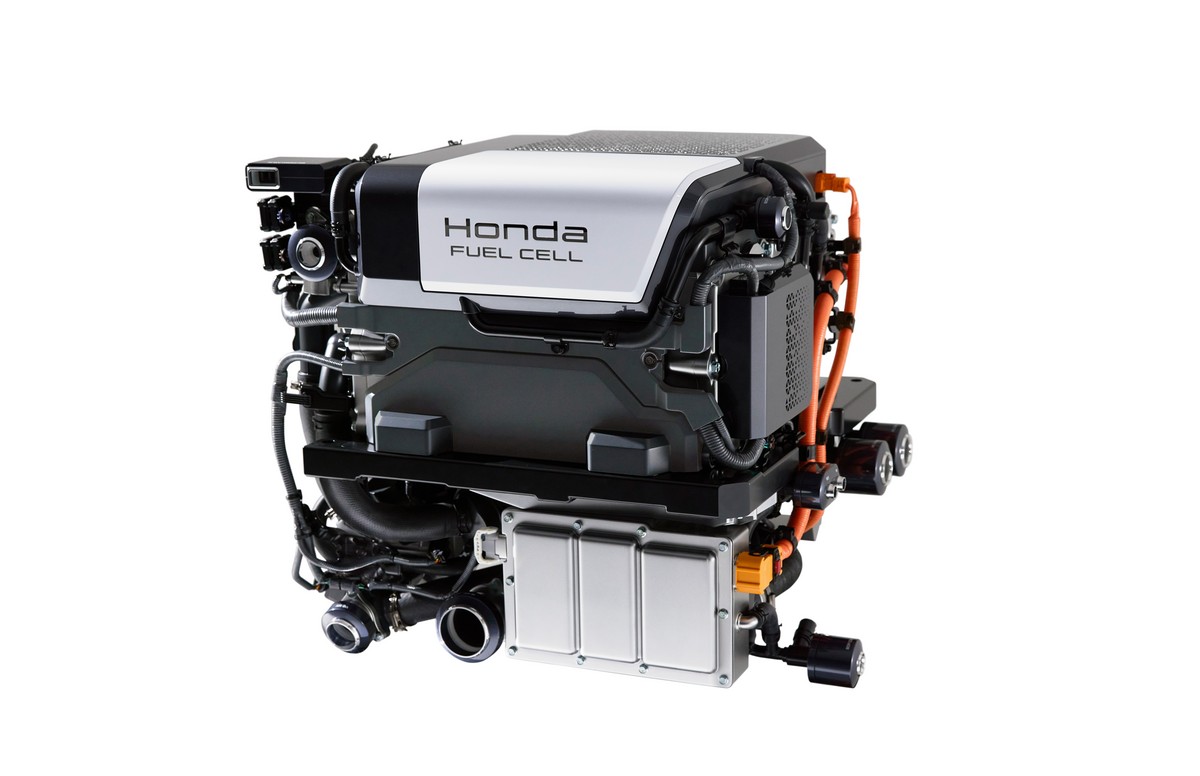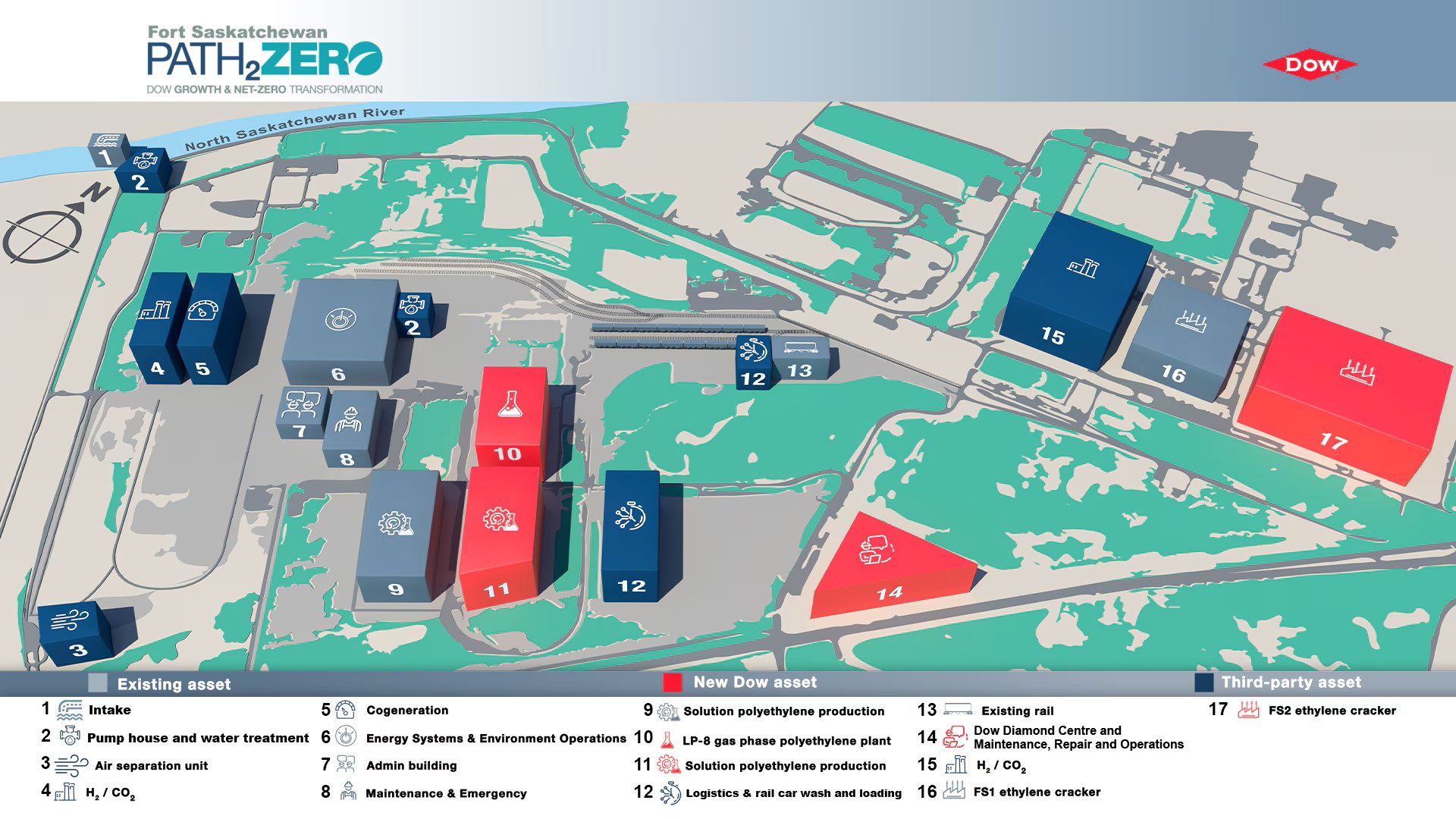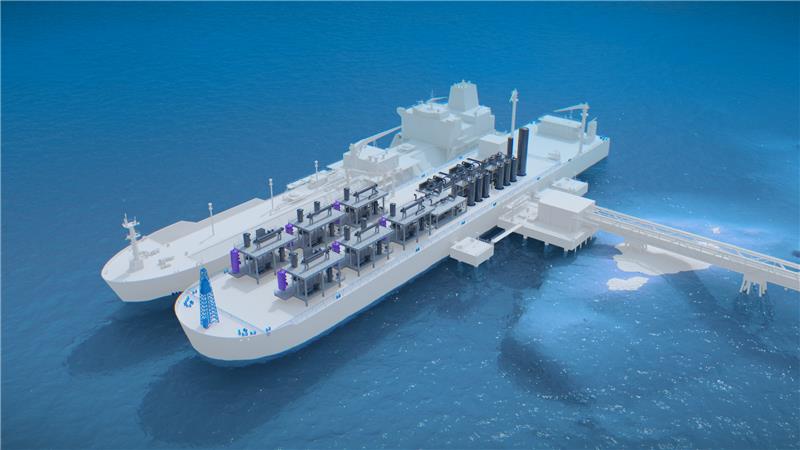Insider Brief
- Honda will debut its Next Generation Fuel Cell Module at the ACT Expo in North America, promising half the cost, double the durability, and triple the volumetric power density compared to its current module, with production targeted for 2027.
- The module supports Honda’s hydrogen expansion across four key domains: fuel cell electric vehicles, commercial trucking, stationary power generation, and construction machinery, reinforcing its zero-emission goal by 2050.
- ACT Expo highlights include the Honda Class 8 Hydrogen Truck Concept, stationary Fuel Cell Power Generator (mass production in 2026), and the 2025 CR-V e:FCEV, showcasing Honda’s readiness for hydrogen-powered mobility and energy infrastructure.
PRESS RELEASE – Fresh from its global debut at the International Hydrogen & Fuel Cell Expo in Japan, the Next Generation Honda Fuel Cell Module will make its first appearance in North America at the Advanced Clean Transportation (ACT) Expo starting April 28. Set to enter production in 2027, the new module will reduce production cost by half while doubling durability and tripling volumetric power density, as compared to the Honda Fuel Cell (FC) module currently in use.
Honda continues to seek new business collaborations as the company expands its hydrogen business to achieve its global goal of zero environmental impact, including carbon neutrality for all products and corporate activities by 2050.
“Honda hydrogen is open for business in North America with the fuel cell technology, the expertise and the supply chain to power a variety of zero-emissions products, including commercial trucking and stationary power generation,” said David Perzynski, assistant manager of Hydrogen Solutions Development at American Honda Motor Co., Inc. “Our production plan for the next generation Honda fuel cell module demonstrates our continued commitment to support hydrogen as an enabler for decarbonization.”

Honda Hydrogen Strategy: Four Domains
Honda has identified four core domains for the initial utilization of its new fuel cell module: fuel cell electric vehicles (FCEVs), commercial fuel cell vehicles, stationary power stations and construction machinery. Perzynski will participate in presentation block, “Hydrogen Power for Fleets,” on April 29 to provide further insights about Honda hydrogen plans.
Honda ACT Expo Display Items
Honda will showcase the following zero-emission products and technologies at its ACT Expo display booth (#2927):
- Class 8 Hydrogen Fuel Cell Truck Concept: The Honda Class 8 Hydrogen Fuel Cell Truck Concept that debuted at ACT Expo 2024, will be on display supported by a new video highlighting real-world testing of the hydrogen-powered truck on California roads that can be seen here. The operational truck concept is powered by three Honda FC Modules, utilizing the system that also powers the CR-V e:FCEV.
- Honda Fuel Cell Module: The module features the current Honda FC system, co-developed by Honda and GM over the last decade. It advanced performance and doubled durability while reducing cost by two-thirds compared to the previous generation1 system. It is available for product integration and on sale now.
- Honda Next Generation Fuel Cell Module: Honda is concurrently beginning discussions with potential customers for its next generation FC module, set to enter production in 2027. The new module will reduce production cost by half, double durability and triple volumetric power density compared to the current FC module.
- Honda Fuel Cell Power Generator: The Honda Fuel Cell Power Generator is a stationary power system capable of supplying hydrogen-derived, clean electricity to large facilities such as factories, data centers and offices. It will utilize combined Honda FC modules, able to scale from 250 kW to 3 MW of electric power supply. It is scheduled for mass production in 2026, utilizing the current Honda FC module A 1/10 scale mock-up of the generator will be displayed.
- 2025 Honda CR-V e:FCEV: the first production plug-in hydrogen fuel cell electric vehicle in America is powered by the current Honda FC system.
Companies interested in collaboration and partnership with Honda hydrogen business may contact [email protected].
Honda Next Generation Fuel Cell Module Specifications
| Maximum Output (Net) | 150 kW |
| Output Voltage | 450 – 850 V |
| Maximum Efficiency (Net) | 59.8 % |
| FC Refrigerant | Honda Genuine FC refrigerant |
| Hydrogen Gas Composition | Equivalent to ISO 14687 |
| Low Voltage Power Supply | DC24V |
| Module Dimensions | W730 x D580 x H700 mm |
| Volume ・ Volumetric Density | 300 L ・ 0.50 kW/L |
| Weight ・ Weight Density | 250 kg ・ 0.60 kW/kg |
| Operating Temperature | -30°C – +60°C |
| Storage Temperature | -40°C – +60°C |
| Max Altitude | 3,500 m |
| Ingress Protection Rating | Equivalent to IP67 |
| CAN Communication Standard | ISO11898 |
| Communication Protocol | SAE J1939 / Honda Hi-Speed CAN (selectable) |
| Compatible Communication Speeds | 500kbps |
*Note: These are target values for development and may change in the future
Class 8 Hydrogen Fuel Cell Truck Concept Specifications
| Total length/width/height | 8,000 mm / 2,400 mm / 4,000mm |
| GCW | GCW : 37,273kg (82,000 lbs) |
| Top Speed | 70 mph at GCW |
| Driving Range | >500 miles at GCW |
| FC Modules Output | 234kW combined (78kW x 3 FC modules) |
| Hydrogen Tank | High pressure 700bar Hydrogen Tank 82kg-H2 |
| Vehicle Battery | 120kWh High Voltage Battery |
Honda Fuel Cell Power Generator Specifications
| Usage | Emergency Backup Power Generator |
| Output | Up to four 250kW units (1,000kW total) can be connected It can be configured in parallel based on 4 units to exceed a total capacity of 1,000 kW |
| Rated Voltage | AC 200-480V, 3-phase, 4-wire system |
| Compliant Standards | ANSI/CSA FC1 / IEC 62282-3-100 |
| Startup Time | Within 10sec |
| Installation Environment | Temperature: -25°C – +45°C Altitude: MAX 2,000m / Performance guaranteed 1000m |
| Noise Level | 76dBA (@7m) or less |
*Note: Information based on standard products working under standby operating conditions. Specifications are subject to change without notice.
About Honda Commitment to the Environment
Honda is transforming its operations to realize its global goal of zero environmental impact by 2050. Through its “Triple Action to Zero” approach, Honda aims to achieve carbon neutrality for all products and corporate activities; utilize 100% carbon-free energy; and pursue resource circulation, the use of 100% sustainable materials by reprocessing products back to raw materials and reusing those materials in the creation of new products. Toward this goal, Honda will strive to make battery-electric and fuel cell-electric vehicles represent 100% of auto sales globally by 2040.
To reduce the environmental impact of its business operations, Honda is offsetting CO2 emissions from its North American manufacturing operations through long-term virtual power purchase agreements (VPPAs) for carbon-free wind and solar power that seek to cover more than 60% of the electricity Honda uses in North America. Honda also supports its suppliers and independent dealerships across North America to incorporate environmentally responsible business practices through the Honda Green Excellence Program and Honda Environmental Leadership Program, respectively.
Learn more at https://www.honda.com/environment.
1 In comparison to the fuel cell system that powered the 2019 Honda Clarity Fuel Cell sedan.








